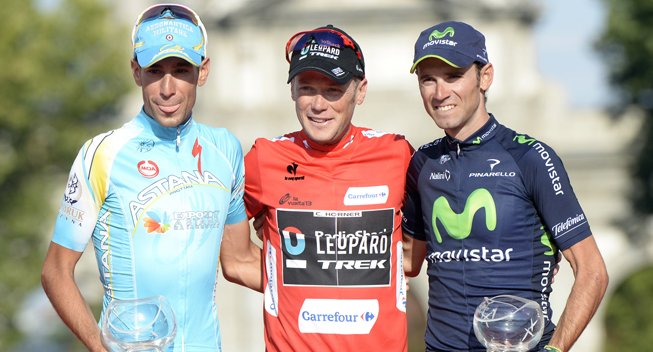The Vuelta a Espana route starts to take shape after AS has revealed a draft that is in line with many of the details that have already been leaked. The Spanish paper reports that there will be three fewer uphill finishes than in the very mountainous 2013 edition of the race.
While the courses for the Giro d'Italia and Tour de France have both been unveiled, the route for this year's Vuelta a Espana will not be confirmed until January 11 at a presentation in Cadiz. Nonetheless, several details have already been leaked and the race shapes up to be another mountainous one.
Race director Javier Guillen has already confirmed that the race will continue its recent trend of including several uphill finishes as it has become the main feature of the event. Despite this intention, there will be slightly fewer summit finishes in next year's edition of the race as the number will be reduced from a massive 11 to 8.
It has already been revealed that the race will kick on August 23 off in Jerez de la Frontera in the southern part of the country and the Spanish paper reports that the spectacle will be opened with a team time trial. From there the race will head north and east through Andalusia – where it will spend a week – Castilla-La Mancha and Aragon, but will avoid the Pyrenees, Catalonia and the Basque Country.
In recent years, the Vuelta a Espana has had a tradition of having three consecutive summit finishes in the third weekend of the race. According to the newspaper, this will be the case again in 2014.
The brutal triptych will start on Saturday, September 6 with a finish on the 9,8km La Camperona climb which has a three kilometre section where the gradient stays between 17% and 22%. Known as "the son of Angliru", its inclusion was already rumoured last week and was tested by the Vuelta organizers earlier this year. If confirmed, the visit will be a first.
On Sunday, September 7, the race will continue with a summit finish on the legendary Lagos di Covadonga. Having been included 18 times since 1983, it is often visited by the Vuelta and was last climbed in 2012 when Antonio Piedra won from a breakaway.
On Monday, September 8, the riders will finish at the Lagos di Somiedo on the Farrapona climb. The finish was last used in 2011 when Rein Taaramae won from a breakaway while Juan Jose Cobo gave the first indications that he was the strongest rider in the race by finishing 2nd. The stage is likely to be a hard one and could include several other major ascents.
A rest day will precede the final week of the race that will include three or four stages in Galicia. While the third weekend will have a major impact on the GC, nothing will be decided until the very end. On the final Saturday, the riders will climb the Puerto de Ancares which has an average gradient of 9,25% and ramps of more than 20%. The climb was last included in 2012 when Joaquim Rodriguez and Alberto Contador battled fiercely for the race leadership, with the latter winning the stage. It is not yet guaranteed that it will be a summit finish.
As already reported, the race won't finish in Madrid in 2014. A time trial is likely to bring the race to a close in Santiago de Compostela but in contrast to earlier reports, it will not be held at nighttime. This will be the fourth time since Unipublic began organizing the Tour in 1979 that the race will finish outside the capital.
Chris Horner won this year's edition of the race and has stated his intention to defend his title in 2014.
| Edward GREENE 34 years | today |
| Kenta NAGAI 21 years | today |
| Vincent JÉRÔME 40 years | today |
| Pirmin BENZ 24 years | today |
| Ivan BASSO 47 years | today |
© CyclingQuotes.com









